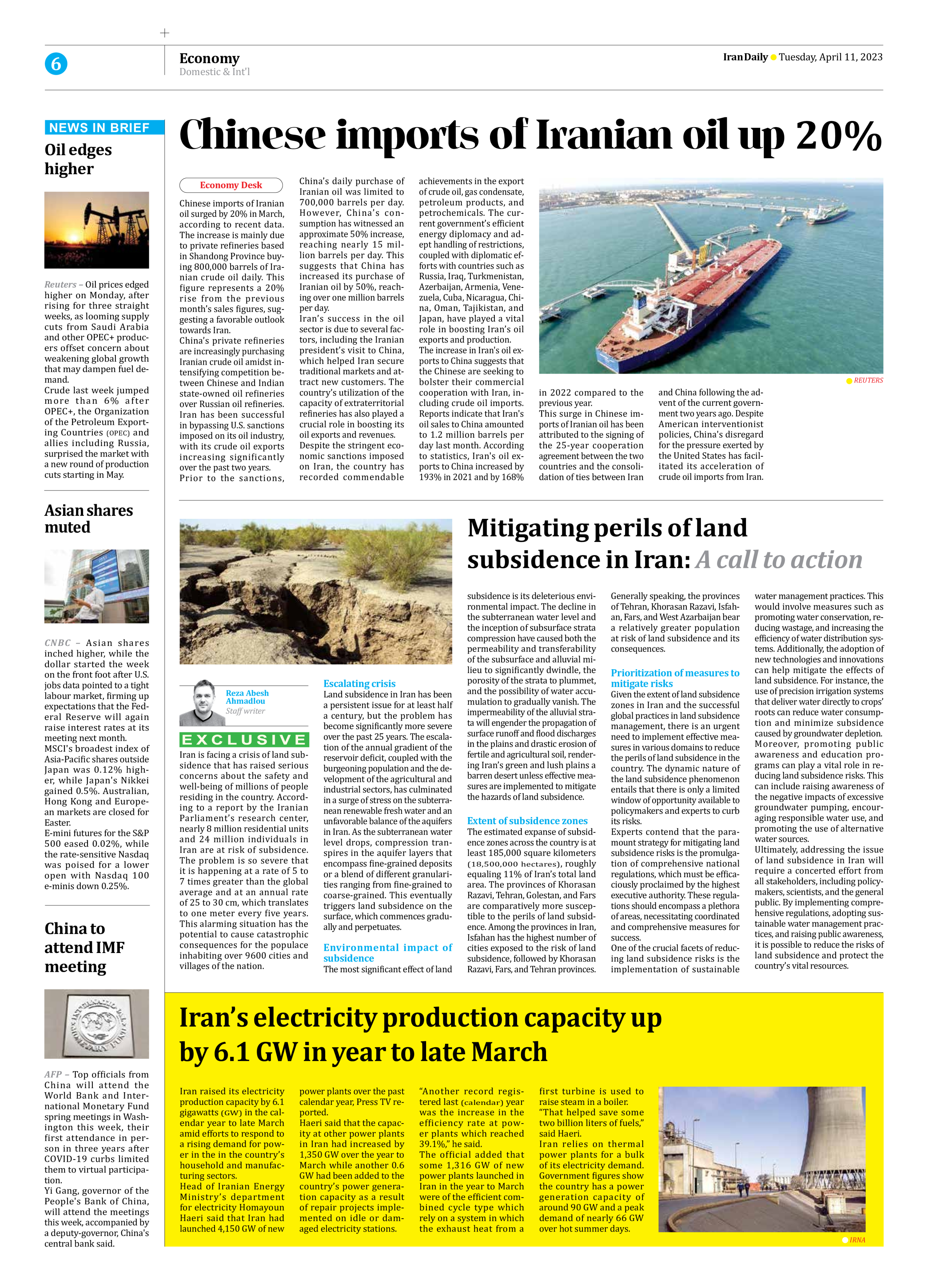
Mitigating perils of land subsidence in Iran: A call to action
Iran is facing a crisis of land subsidence that has raised serious concerns about the safety and well-being of millions of people residing in the country. According to a report by the Iranian Parliament’s research center, nearly 8 million residential units and 24 million individuals in Iran are at risk of subsidence. The problem is so severe that it is happening at a rate of 5 to 7 times greater than the global average and at an annual rate of 25 to 30 cm, which translates to one meter every five years. This alarming situation has the potential to cause catastrophic consequences for the populace inhabiting over 9600 cities and villages of the nation.
Escalating crisis
Land subsidence in Iran has been a persistent issue for at least half a century, but the problem has become significantly more severe over the past 25 years. The escalation of the annual gradient of the reservoir deficit, coupled with the burgeoning population and the development of the agricultural and industrial sectors, has culminated in a surge of stress on the subterranean renewable fresh water and an unfavorable balance of the aquifers in Iran. As the subterranean water level drops, compression transpires in the aquifer layers that encompass fine-grained deposits or a blend of different granularities ranging from fine-grained to coarse-grained. This eventually triggers land subsidence on the surface, which commences gradually and perpetuates.
Environmental impact of subsidence
The most significant effect of land subsidence is its deleterious environmental impact. The decline in the subterranean water level and the inception of subsurface strata compression have caused both the permeability and transferability of the subsurface and alluvial milieu to significantly dwindle, the porosity of the strata to plummet, and the possibility of water accumulation to gradually vanish. The impermeability of the alluvial strata will engender the propagation of surface runoff and flood discharges in the plains and drastic erosion of fertile and agricultural soil, rendering Iran’s green and lush plains a barren desert unless effective measures are implemented to mitigate the hazards of land subsidence.
Extent of subsidence zones
The estimated expanse of subsidence zones across the country is at least 185,000 square kilometers (18,500,000 hectares), roughly equaling 11% of Iran’s total land area. The provinces of Khorasan Razavi, Tehran, Golestan, and Fars are comparatively more susceptible to the perils of land subsidence. Among the provinces in Iran, Isfahan has the highest number of cities exposed to the risk of land subsidence, followed by Khorasan Razavi, Fars, and Tehran provinces. Generally speaking, the provinces of Tehran, Khorasan Razavi, Isfahan, Fars, and West Azarbaijan bear a relatively greater population at risk of land subsidence and its consequences.
Prioritization of measures to mitigate risks
Given the extent of land subsidence zones in Iran and the successful global practices in land subsidence management, there is an urgent need to implement effective measures in various domains to reduce the perils of land subsidence in the country. The dynamic nature of the land subsidence phenomenon entails that there is only a limited window of opportunity available to policymakers and experts to curb its risks.
Experts contend that the paramount strategy for mitigating land subsidence risks is the promulgation of comprehensive national regulations, which must be efficaciously proclaimed by the highest executive authority. These regulations should encompass a plethora of areas, necessitating coordinated and comprehensive measures for success.
One of the crucial facets of reducing land subsidence risks is the implementation of sustainable water management practices. This would involve measures such as promoting water conservation, reducing wastage, and increasing the efficiency of water distribution systems. Additionally, the adoption of new technologies and innovations can help mitigate the effects of land subsidence. For instance, the use of precision irrigation systems that deliver water directly to crops’ roots can reduce water consumption and minimize subsidence caused by groundwater depletion.
Moreover, promoting public awareness and education programs can play a vital role in reducing land subsidence risks. This can include raising awareness of the negative impacts of excessive groundwater pumping, encouraging responsible water use, and promoting the use of alternative water sources.
Ultimately, addressing the issue of land subsidence in Iran will require a concerted effort from all stakeholders, including policymakers, scientists, and the general public. By implementing comprehensive regulations, adopting sustainable water management practices, and raising public awareness, it is possible to reduce the risks of land subsidence and protect the country’s vital resources.







